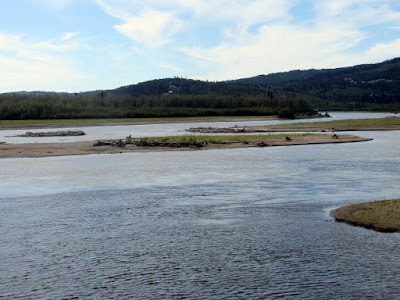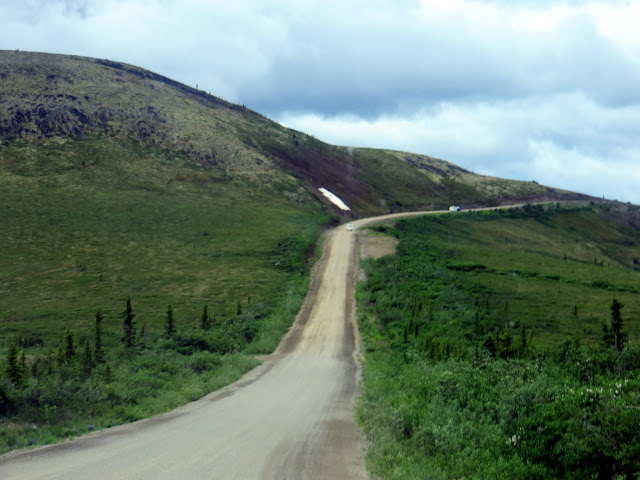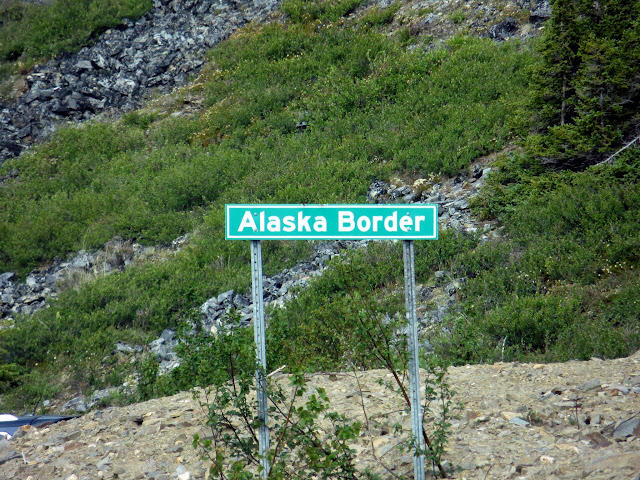Leaving Delta Junction, we made the short 95 miles drive to Fairbanks. Actually, we stayed at the Riverview RV Park in North Pole, Alaska.
Just down the road is the Santa Claus House open year round.
The whole town has street names such as Santa Claus Lane and the light poles are also wrapped in red to look like candy canes.
Fairbanks is the second largest population center in Alaska with almost 100,000 people living in the area.
We kept busy with different activities while we were there.
We visited Creamer's Field Migratory Waterfowl Refuge. From 1928 to 1966, Charles and Anna Creamer ran this successful dairy farm in northern Alaska. As the dairy grew, migratory waterfowl congregated in the fields in larger numbers. The grain and large open fields provided prime habitat. When the dairy went up for sale in 1966, the community worked with the state and federal governments to purchase the land as a permanent wildlife refuge.
In early spring sandhill cranes stopover on their way to their breeding grounds. The juvenile males stay at Creamer's Field during the summer and then join back with the flock on their return trip south in August.
We watched some of the remaining cranes in the fields of flowers.
We also took a cruise on the Riverboat Discovery.
Once boarded, the riverboat begins it journey down the Chena River. As we go down the river, there are several stops and demonstrations.
First, a float plane makes a takeoff and landing right beside us as we watch from the boat.
Then we cruised down to where Susan Butcher, the four time winner of the Iditarod, lived with her family. Sadly, she passed away in 2010, but today we are greeted by her husband, David Monson,
to tell us about and demonstrate dogsledding.
In the winter, the Chena River freezes over and dogsled teams are taken down the river.
Continuing down the river, we came to the spot where the Chena and Nanana Rivers merge. You can see the difference in the two rivers, one being full of glacial silt and the other a deeper gray color.
We turned around on the Chena River and continued back to a replica of an Atabascan fishing camp. We got off the ship to tour several spot in the village,
which also included a stop to watch a herd of reindeer.
We learned about how salmon was fished and dried by these early inhabitants.
We really enjoyed this afternoon cruise. Stay tuned to Part 2 of our time in Fairbanks.



















































